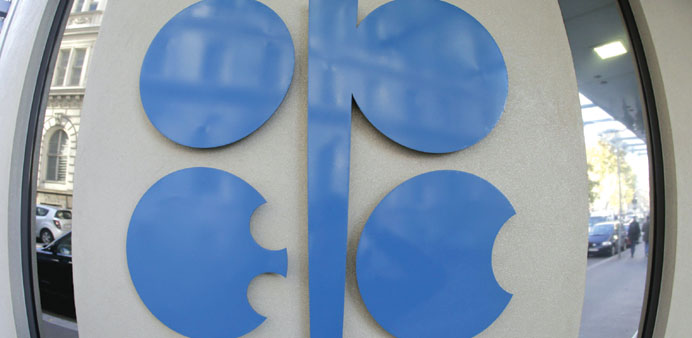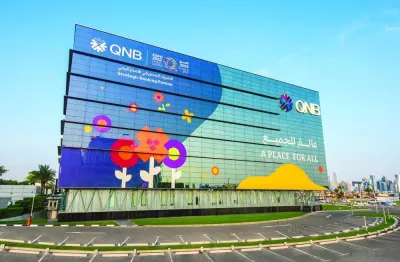A general view of the OPEC building and logo in Vienna (file). Some Opec members are pushing to trim output next year, according to people familiar with the debate.
Dow Jones
A fresh rift is emerging among Opec members over trimming the group’s oil output in the coming months, amid surging US production, a resurgence in Iraqi exports and the possible return of more Iranian crude to world markets.
The Organisation of the Petroleum Exporting Countries, a grouping of some of the world’s largest oil producers, hasn’t changed its production ceiling for two years. No one expects Opec to cut back at a meeting scheduled in Vienna for next week.
But some members are pushing to trim output next year, according to people familiar with the debate. One Opec official said members will have to decide whether or not to cut as early as the first half of next year, amid a risk that short-term global oil supply might build to such a level that prices could weaken.
Opec produces more than one out of every three barrels burned in the world. But its ability to move prices significantly has been hindered recently by a surge in non-Opec crude, including a boom in shale oil in the US.
And now, Iraq is making strides in dramatically boosting its output. The country is on track to produce some 3mn bpd on average this year, its highest sustained level in at least 20 years.
And Iran’s nuclear deal with the West has added new uncertainty over whether the country will eventually be allowed to ramp up its own output, potentially adding more barrels to global markets.
Meanwhile, Opec expects overall demand for its crude to drop by about 300,000 bpd next year.
All that is putting pressure on Opec members to shave their overall production to bolster prices. Iran is pushing publicly for Baghdad to throttle back, and accusing Iraq of stealing its customers amid sanctions.
“Iraq has behaved inappropriately in dealing with customers of Iranian oil” amid the sanctions against Iran, said Mansour Moazami, an Iranian deputy minister in an interview with the ministry’s website earlier this month.
A senior Gulf Opec official said he expects Iran will seek a debate on whether some Opec members should rein in production if Iranian barrels start to return to world markets.
“If Iran increases its production, Opec may have to look at who should cut, and most likely that would be the Gulf,” said one Opec official. Gulf Opec officials, however, are split on who should rein in output, according to people familiar with the debate. They include Saudi Arabia, Kuwait and the UAE, who together account for the lion’s share of output in the group.
Some say they should do it themselves next year in an effort to bolster prices, while others say Iraq should be asked to rein in its output, those involved in the debate say.
“The closer Iraq gets to a 4mn bpd mark, the more it is important for us to find a way to put a limit on their output,” said one Gulf delegate.
But Iraq has shown little willingness to back down.
Opec has kept its overall production ceiling at 30mn bpd of crude since December 2011. Earlier this year, surging US production divided members over what to do in response to all the new supply. They agreed only to study the issue at the group’s last meeting in May.
Earlier this month, Iran agreed to a number of measures that further restricts its nuclear energy programme in exchange for limited sanction relief. Recent US and European Union sanctions have cut Iranian exports by some 1.5mn bpd.
The nuclear deal doesn’t technically allow for any new Iranian oil exports. But it promises to temporarily halt any new restrictions over the next six months. As Iran is currently producing a bit below its sanctions limit, the deal could result in the addition of a few hundred thousand barrels of extra Iranian oil per day to markets.
Global crude prices fell initially on the news of the deal, but have firmed again more recently, with prices for Brent, a key international benchmark, hovering just over $110 a barrel. US benchmark prices are around $90 a barrel, still high by historical standards.
Still, if diplomatic progress on Iran continues in the coming months, traders may expect a further easing of sanctions and bid prices down in anticipation of such an outcome. According to Bank of AmericaMerrill Lynch, a full return of lost Iranian exports could slash prices by $10 a barrel-potentially bringing them below the $100 a barrel many Opec members-including Iran-need to balance their budgets.



